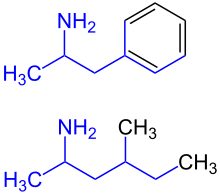Chemical similarity (or molecular similarity) refers to the similarity of chemical elements, molecules or chemical compounds with respect to either structural or functional qualities, i.e. the effect that the chemical compound has on reaction partners in inorganic or biological settings. Biological effects and thus also similarity of effects are usually quantified using the biological activity of a compound. In general terms, function can be related to the chemical activity of compounds (among others).

The notion of chemical similarity (or molecular similarity) is one of the most important concepts in cheminformatics.[1][2] It plays an important role in modern approaches to predicting the properties of chemical compounds, designing chemicals with a predefined set of properties and, especially, in conducting drug design studies by screening large databases containing structures of available (or potentially available) chemicals. These studies are based on the similar property principle of Johnson and Maggiora, which states: similar compounds have similar properties.[1]
- ^ a b Johnson, A. M.; Maggiora, G. M. (1990). Concepts and Applications of Molecular Similarity. New York: John Wiley & Sons. ISBN 978-0-471-62175-1.
- ^ N. Nikolova; J. Jaworska (2003). "Approaches to Measure Chemical Similarity - a Review". QSAR & Combinatorial Science. 22 (9–10): 1006–1026. doi:10.1002/qsar.200330831.